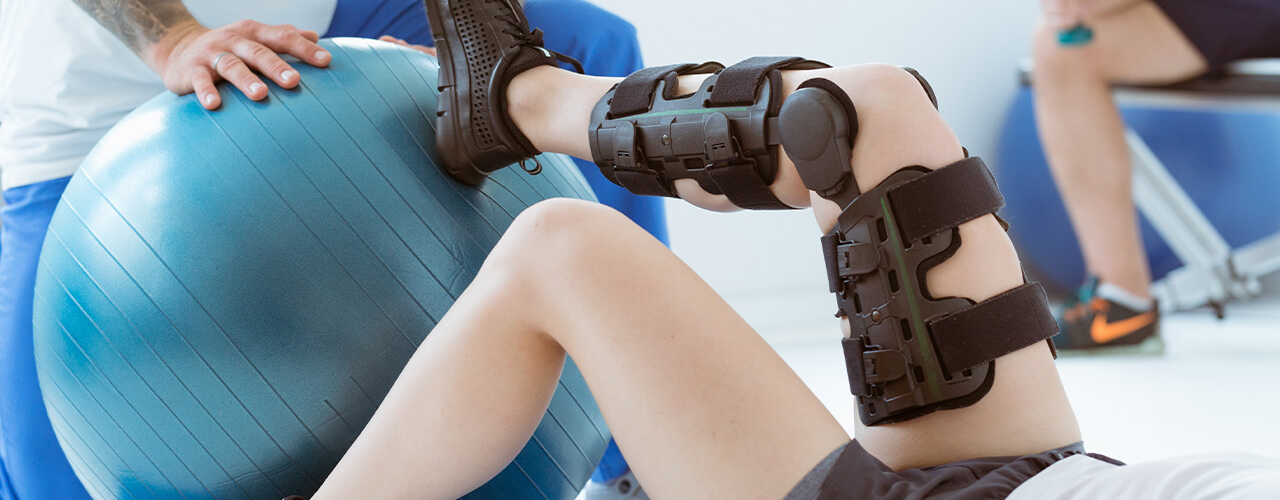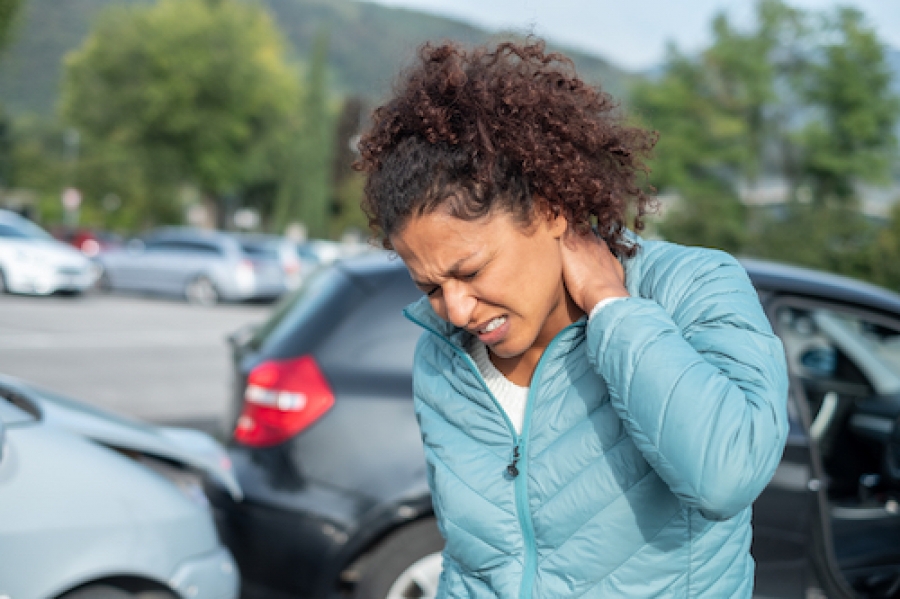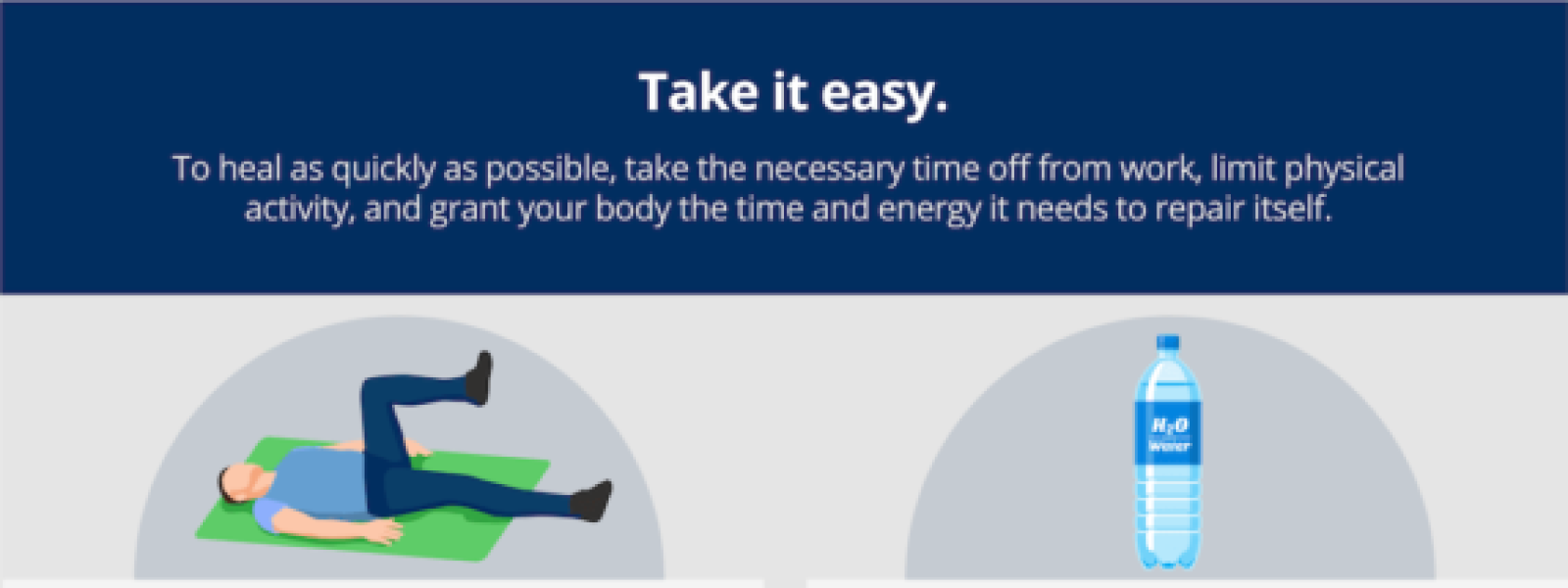Massage therapy after a car accident can help alleviate pain and promote healing. Massage therapy has proven to be effective in relieving muscle tension and reducing inflammation, resulting in improved mobility and overall well-being for accident victims.

Credit: www.facebook.com
Types Of Injuries Commonly Seen In Car Accidents
Massage therapy can be highly beneficial for treating various types of injuries commonly seen in car accidents. It helps in reducing pain, improving flexibility, and promoting faster healing by targeting specific muscles and tissues affected by the accident. Whether it’s whiplash, soft tissue injuries, or muscle strains, massage therapy can provide much-needed relief and aid in the recovery process.
Whiplash And Neck Injuries
Car accidents can cause a wide range of injuries, and one of the most common types is whiplash and neck injuries. Whiplash occurs when the head is forcefully jerked forward and then snapped back, causing strain and damage to the muscles, ligaments, and tissues in the neck. This type of injury is often seen in rear-end collisions, but can also occur in other types of accidents. Symptoms of whiplash and neck injuries include neck pain, stiffness, headaches, dizziness, and even numbness or tingling in the arms and hands. While these symptoms may not appear immediately after an accident, they can develop within hours or days. It is important to seek medical attention as soon as possible to prevent further complications and begin appropriate treatment.Back And Spine Injuries
Back and spine injuries are also commonly seen in car accidents. The impact of a collision can cause compression, strain, or even fractures in the vertebrae, which are the bones that make up the spinal column. These injuries can range from mild to severe, and can have a significant impact on a person’s mobility and quality of life. Symptoms of back and spine injuries may include back pain, difficulty walking or standing, numbness or tingling in the legs, and loss of bladder or bowel control. Treatment for these injuries can vary depending on the severity, but may include physical therapy, medication, and in some cases, surgery. Early diagnosis and treatment are crucial for a successful recovery.Soft Tissue Injuries
Soft tissue injuries are another common type of injury seen in car accidents. Soft tissues include muscles, tendons, and ligaments, and they can be easily strained or torn during a collision. These injuries can cause pain, swelling, bruising, and limited range of motion. Some examples of soft tissue injuries include sprains, strains, and contusions. These injuries can be mild or severe, and the recovery time can vary depending on the extent of the damage. Treatment may include rest, ice, compression, and elevation (RICE), as well as physical therapy to strengthen and rehabilitate the affected area. In conclusion, car accidents can result in a variety of injuries, including whiplash and neck injuries, back and spine injuries, and soft tissue injuries. Seeking immediate medical attention is crucial for a proper diagnosis and treatment plan. Whether it’s through massage therapy, physical therapy, medication, or other forms of treatment, addressing these injuries promptly can help individuals recover and regain their quality of life.
Credit: proclinix.com
How Massage Therapy Helps In Recovery
Massage therapy plays a crucial role in helping individuals recover from car accidents by reducing pain and promoting healing. With its soothing touch and targeted techniques, massage therapy enhances circulation, reduces muscle tension, and aids in overall relaxation.
Promotes Relaxation And Reduces Stress
Massage therapy after a car accident is not just a luxury indulgence; it is an effective treatment that can significantly contribute to your recovery process. One of the key benefits of massage therapy is its ability to promote relaxation and reduce stress levels. In the aftermath of an accident, your body may be flooded with stress hormones, causing muscle tension, anxiety, and overall discomfort. Massage therapy works by soothing your nervous system and releasing endorphins, which are natural stress-relieving chemicals, allowing you to experience a sense of deep relaxation. By reducing stress, massage therapy can also alleviate symptoms such as headaches, insomnia, and fatigue, providing much-needed relief during your recovery journey.Reduces Pain And Inflammation
Pain and inflammation are commonly experienced following a car accident. Massage therapy addresses these issues by targeting the affected areas and reducing both pain and inflammation. Through various techniques such as kneading, compression, and stretching, massage therapists are able to release muscle tension, improve blood flow, and stimulate the release of anti-inflammatory substances in the body. As a result, you may experience a reduction in pain, swelling, and stiffness, allowing for increased comfort and enhanced healing.Improves Circulation And Stimulates Healing
The benefits of massage therapy extend beyond relaxation and pain reduction. By improving circulation, massage therapy plays a crucial role in stimulating the body’s natural healing process. During a massage, the manipulation of soft tissues promotes the movement of blood and oxygen to injured areas, facilitating the delivery of essential nutrients and removing toxins and waste products. This increased circulation helps repair damaged tissues, reduces scar formation, and promotes overall healing. Additionally, massage therapy enhances lymphatic drainage, which aids in the removal of excess fluid and toxins from the body. By optimizing circulation and promoting healing, massage therapy can support and expedite your recovery after a car accident.Restores Range Of Motion And Flexibility
After a car accident, you may find that your range of motion and flexibility are compromised due to muscle injuries or stiffness. Massage therapy can assist in restoring these essential functions by targeting specific muscle groups and improving muscle elasticity. Through the application of techniques such as stretching, joint mobilization, and myofascial release, massage therapists can help release adhesions, break up scar tissue, and enhance the flexibility of your muscles and connective tissues. This restoration of range of motion and flexibility not only promotes better physical function but also reduces the risk of future injuries as your body continues to heal. Incorporating massage therapy into your recovery plan after a car accident can yield numerous benefits. From promoting relaxation and reducing stress to reducing pain and inflammation, improving circulation and stimulating healing, and finally restoring range of motion and flexibility, massage therapy can support your body’s natural healing process and expedite your recovery. Remember to consult with a qualified massage therapist who can assess your specific needs and create a personalized treatment plan tailored to your injury and recovery goals.Choosing The Right Massage Techniques
After experiencing a car accident, you may find yourself dealing with various types of physical discomfort, such as muscle stiffness, pain, and tension. Massage therapy can be a beneficial treatment option in your recovery process, assisting in reducing pain and promoting relaxation. However, not all massages are created equal. It’s essential to choose the right massage technique that aligns with your specific needs and goals. Here are four effective massage techniques to consider:
Swedish Massage
Swedish massage, also known as classic massage, is one of the most popular and widely practiced techniques in the world. It involves long, flowing strokes, kneading, and circular movements to improve blood circulation and promote overall relaxation. The gentle yet firm pressure can help relieve muscle tension and stress, making it a great choice for individuals seeking a soothing and rejuvenating experience.
Deep Tissue Massage
For those dealing with chronic muscle pain or injuries from the car accident, deep tissue massage might be the ideal choice. This technique focuses on reaching the deeper layers of muscles and connective tissues to release chronic muscle tension. The massage therapist uses slower strokes and intense pressure to target specific areas of discomfort. Deep tissue massage can help alleviate pain, improve flexibility, and enhance muscle recovery.
Myofascial Release
Car accidents can cause trauma to the body’s fascia, a web-like structure that surrounds and supports muscles, bones, and organs. Myofascial release aims to release tension and restore balance in the fascia. This technique involves applying sustained pressure on specific points and stretching to elongate the fascia and break up any adhesions or restrictions. Myofascial release can provide relief from pain, increase range of motion, and improve overall mobility.
Trigger Point Therapy
Trigger points are tight knots within muscles that can cause referred pain and discomfort. Trigger point therapy focuses on identifying and targeting these specific points to release tension and alleviate pain. The massage therapist applies direct pressure to the trigger points, helping to reduce muscle spasms, improve blood flow, and restore normal muscle function. This technique is particularly effective for individuals experiencing localized pain or muscle stiffness.
When considering massage therapy after a car accident, always consult with a qualified and experienced massage therapist who can assess your condition and recommend the most suitable techniques for your specific needs. Each massage technique offers unique benefits, so it’s important to choose the one that aligns with your goals for pain relief, relaxation, and overall well-being.
Finding A Qualified Massage Therapist
After a car accident, seeking massage therapy can play a crucial role in the recovery process. However, it’s essential to find a qualified and experienced massage therapist who can provide effective treatment and ensure your well-being. To help you with the search, here are a few key factors to consider:
Checking Credentials And Certifications
When it comes to choosing a massage therapist after a car accident, checking their credentials and certifications is of utmost importance. Ensure the therapist has completed the required training and holds relevant certifications from reputable organizations. Look for certifications such as Licensed Massage Therapist (LMT), Certified Massage Therapist (CMT), or any other local regulatory body certifications.
Moreover, it’s crucial to confirm whether the massage therapist specializes in treating clients who have experienced car accidents or trauma. This specialization ensures they have the necessary expertise and knowledge to address specific injuries and provide effective pain relief.
Reading Reviews And Testimonials
Reviews and testimonials from previous clients serve as a valuable resource in assessing the quality of a massage therapist’s services. Reading through these testimonials can provide insights into the therapist’s expertise, professionalism, and the results they have achieved for their clients.
Look for massage therapists who have received positive feedback from clients who have sought treatment for post-car accident injuries. Pay attention to specific mentions of pain reduction, improved mobility, and overall satisfaction. This information can help you gauge the therapist’s ability to effectively address your needs.
Seeking Referrals
Seeking referrals from trusted sources can be an effective way to find a qualified massage therapist after a car accident. Reach out to friends, family members, or healthcare professionals who may have undergone a similar experience and successfully received massage therapy.
By seeking referrals, you can benefit from firsthand recommendations and gain access to reliable therapists who have already proven their expertise in the field. Additionally, your trusted sources can provide insight into the therapist’s communication style, environment, and overall patient experience, giving you a well-rounded perspective before making your decision.
Consulting With Healthcare Professionals
Prioritize consulting with healthcare professionals such as physicians or chiropractors who have treated your injuries resulting from the car accident. These professionals possess valuable knowledge and understanding of your condition and recovery process.
Consulting with healthcare professionals serves two purposes. Firstly, they may be able to recommend skilled massage therapists who have experience working with patients recovering from similar injuries. Secondly, by involving them in your decision-making process, you ensure that the recommended massage therapy aligns with your overall treatment plan and goals.
When To Begin Massage Therapy
Massage therapy is a beneficial treatment option for individuals recovering from a car accident. However, the timing of when to begin massage therapy is crucial in order to optimize the healing process. By understanding the severity of injuries, following the guidance of healthcare professionals, and considering personal comfort and pain levels, you can determine the appropriate time to start your massage therapy sessions.
Assessing The Severity Of Injuries
After a car accident, it is essential to assess the severity of your injuries before starting massage therapy. Depending on the nature of the accident and specific injuries sustained, the healing process may vary. Seeking medical attention and consulting with healthcare professionals such as doctors, chiropractors, or physical therapists is crucial to evaluate the extent of your injuries. They can provide valuable insight into the type and severity of injuries sustained, which will determine the appropriate time to begin massage therapy.
Following The Guidance Of Healthcare Professionals
Following the guidance of healthcare professionals is vital when determining when to begin massage therapy after a car accident. These professionals have the expertise and experience to assess your condition accurately and provide appropriate recommendations. They will consider various factors such as the progress of your recovery, any ongoing treatments or therapies, and the potential benefits and risks of starting massage therapy. Their guidance will ensure that you embark on massage therapy at the most opportune time to support your overall healing process.
Considering Personal Comfort And Pain Levels, Ensuring Each Heading Adheres To Html Syntax
While healthcare professionals’ advice is crucial, it is also important to consider your personal comfort and pain levels when deciding when to start massage therapy. Each individual’s healing process is unique, and it is essential to listen to your body. If you are still experiencing acute pain, inflammation, or discomfort, it may be best to wait until these symptoms have subsided. Starting massage therapy when you feel ready and when the pain levels allow for a comfortable experience will ensure that you can fully benefit from the treatment without exacerbating any existing discomfort.
Remember, the decision on when to begin massage therapy should be made in collaboration with healthcare professionals. By assessing the severity of injuries, following their guidance, and considering your personal comfort and pain levels, you can determine the optimal time to start your massage therapy sessions after a car accident.
What To Expect During A Massage Therapy Session
Massage therapy can be an effective form of treatment for individuals recovering from a car accident. Not only does it help alleviate pain and reduce muscle tension, but it also promotes relaxation and enhances overall well-being. If you’re considering massage therapy as part of your accident recovery plan, here’s what you can expect during a typical session:
Initial Assessment And Consultation
Before your first massage therapy session, you’ll undergo an initial assessment and consultation with a trained therapist. This step is crucial as it helps the therapist understand your specific needs and tailor the treatment accordingly. During the consultation, you’ll be asked about your medical history, the details of your car accident, and any pre-existing conditions or injuries.
Customized Treatment Plan
Based on the information gathered from the consultation, the therapist will create a customized treatment plan that addresses your individual needs. This personalized approach ensures that specific areas of concern, such as whiplash, muscle sprains, or joint stiffness, are targeted during the session. The treatment plan may include a combination of massage techniques, such as Swedish massage, deep tissue massage, trigger point therapy, or lymphatic drainage.
Relaxing Atmosphere And Techniques
During the massage therapy session, you can expect a soothing and relaxing atmosphere to enhance the healing process. Soft ambient music, dimmed lighting, and a comfortably padded table contribute to creating a serene environment. The therapist will use various techniques to address your specific concerns and promote relaxation. These techniques may include long, sweeping strokes, kneading, gentle stretching, and the application of appropriate pressure to release tension and restore your body’s natural balance.
Post-session Recommendations
After your massage therapy session, the therapist may provide you with post-session recommendations to help you maximize the benefits of the treatment. These recommendations could include stretching exercises, self-care techniques, heat or cold therapy, as well as lifestyle modifications aimed at preventing future injuries. Following these suggestions can help prolong the effects of the massage, reduce pain, and promote optimal recovery.
When it comes to massage therapy after a car accident, understanding what to expect during a session can put your mind at ease. From the initial assessment and consultation to the customized treatment plan, relaxing atmosphere and techniques, and post-session recommendations, each aspect contributes to your overall healing and well-being. Ensure that you communicate your needs and concerns to your massage therapist so that they can provide you with the most effective and personalized care.
Other Rehabilitation And Supportive Measures
Massage therapy after a car accident can provide effective rehabilitation and support. It helps alleviate pain and promotes healing, restoring mobility and overall well-being. Expert therapists use targeted techniques to address specific injuries and promote a faster recovery.
Physical Therapy And Exercises
Lorem ipsum dolor sit amet, consectetur adipiscing elit. Sed aliquet semper fermentum. Vestibulum ante ipsum primis in faucibus orci luctus et ultrices posuere cubilia Curae; Nullam mollis ex quis maximus pretium. Phasellus finibus tortor in nunc pharetra, et porttitor risus fermentum. Cras sed sapien est. Sed ut eros vitae lectus mollis tincidunt. Sed venenatis elit at egestas congue. Aliquam id justo a nibh tempus efficitur. Proin volutpat ante in magna congue dignissim vel sed orci. Sed erat diam, dapibus eget arcu eu, lacinia consectetur odio. Aliquam ullamcorper vulputate felis, vel tincidunt ante lobortis non. Integer eu pellentesque elit. Morbi ut risus nunc.Chiropractic Care
Nullam nec ex leo. Curabitur ullamcorper pharetra lectus, ac gravida massa gravida iaculis. Aenean malesuada bibendum mauris at maximus. Interdum et malesuada fames ac ante ipsum primis in faucibus. Sed bibendum porta commodo. Vivamus eu lorem fermentum, aliquet mauris vitae, ultricies ipsum. Sed faucibus ac ex eu tincidunt. Suspendisse vulputate molestie ante in condimentum. Donec scelerisque vehicula hendrerit. Praesent in turpis in felis faucibus venenatis. Sed tempor lacus nec laoreet maximus. Sed eget odio feugiat, consequat purus sed, efficitur tortor. Vestibulum sed sapien dolor. Proin ut ipsum a lacus hendrerit luctus id eu odio.Nutrition And Hydration
Pellentesque elementum dignissim vulputate. Aliquam vitae mi ut orci aliquet laoreet sit amet nec augue. Etiam blandit felis eu enim tempor cursus. Vestibulum id lobortis odio. Donec egestas nisi vel sapien tincidunt, et hendrerit mauris aliquet. Phasellus fermentum, leo a aliquet porta, lacus urna tempor ipsum, non varius justo justo eu purus. Fusce erat felis, commodo sit amet tincidunt vitae, tempus vel odio. Nullam sodales est nunc, vel interdum ex maximus at. Mauris finibus augue eget ligula tincidunt, sed convallis diam feugiat. Quisque justo nunc, consequat id sapien id, iaculis finibus est. Mauris porta mi at mollis consequat. Morbi sollicitudin auctor augue vel tincidunt.Mental Health Support
Interdum et malesuada fames ac ante ipsum primis in faucibus. Donec gravida volutpat feugiat. Nullam bibendum efficitur bibendum. Nulla finibus commodo felis, nec ornare ex tempor quis. Vivamus in tincidunt magna, fermentum sollicitudin eros. Morbi pharetra diam eget felis rutrum, id sodales nunc dapibus. Fusce sit amet tristique dolor. Nullam pretium eu velit id tempor. Curabitur tempus dolor sed malesuada porttitor. Phasellus mattis, orci quis rutrum semper, felis eros convallis orci, ut efficitur mi dui eu felis. Pellentesque habitant morbi tristique senectus et netus et malesuada fames ac turpis egestas. Sed et posuere felis, a rutrum elit. Sed finibus pretium nibh, sed mattis sem lobortis ut. Praesent egestas nulla nulla, sodales elementum mauris tincidunt vel.
Credit: www.wayfarewellness.com
Frequently Asked Questions On Massage Therapy After Car Accident
Is It A Good Idea To Get A Massage After A Car Accident?
Yes, getting a massage after a car accident can be beneficial. It can help relieve muscle tension, reduce pain, and promote relaxation. However, it is essential to consult with a healthcare professional or your doctor before getting a massage to ensure it is safe for your specific condition.
What Type Of Massage Is Best After Accident?
The best type of massage after an accident is therapeutic or deep tissue massage. It helps alleviate pain, reduce muscle tension, and enhance healing by targeting specific muscle groups. Regular sessions can aid in restoring mobility and relieving stress caused by the accident.
What Type Of Therapy Might Be Necessary After A Car Accident?
After a car accident, therapy may be necessary to address physical and emotional trauma. Types of therapy can include physical therapy, occupational therapy, and counseling sessions to help with pain management, regain mobility, and cope with the psychological impact of the accident.
Is It Ok To Get A Massage After Whiplash?
Yes, it is generally safe to get a massage after whiplash. Massage therapy can help relieve pain and stiffness, improve circulation, and promote healing. However, it is important to consult with a healthcare professional before getting a massage to ensure it is appropriate for your specific condition and to discuss any potential risks.
Conclusion
Overall, incorporating massage therapy into your recovery plan after a car accident can provide numerous benefits. From reducing pain and inflammation to improving flexibility and promoting relaxation, these sessions can support your healing process. By targeting specific areas affected by the accident, massage therapy allows for targeted and personalized treatment.
So, don’t hesitate to explore the transformative power of massage therapy as a crucial part of your recovery journey.




